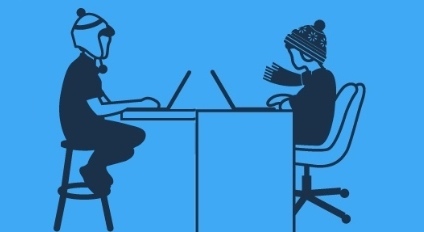Andy Whiteley is the National Sales Director of UK-based HVAC, Andrews Sykes/Andrews Air Conditioning & Refrigeration.
Editor’s Note: For many areas of the world the hottest days are yet to come. Andrew Whiteley of Andrews Sykes Hire, has put together an interesting infographic and a lot of data on how temperature can affect office productivity. For business center and coworking space owners and operators, where you set your thermostat might have a bearing not only on productivity within your four walls, but also on attitude, mood and even the ‘happiness’ factor that we are hearing more about. Take heed of the following and consider posting the infographic in the kitchen. Fun information, yet fascinating as well.
Whether it’s a casualization of office attire, clashes over climate controls or laxity of lunch hours, there are a number of adverse impacts on office staff when workplace temperatures soar – and it’s not just the summer sun that has an adverse effect on working environments and mentalities this September.
A poll conducted by the UK’s leading air conditioning and heater hire specialist, Andrews Sykes Hire, has revealed how hot conditions have a uniformed affect workplace productivity. The survey of 2,000 office staff found 30% of workers took longer breaks at lunch, exceeding their designated time by nearly 13 minutes during the summer. Thirteen minutes a day adds up to more than an hour wasted per week or 4.3 over the course of a month. A considerable amount when applied to a workforce of a large scale.
- Workers leave the office on average 2.3 days per week during the summer months.
- 18-24 year olds were the most likely to admit to lengthening lunches, twice as likely as those 55+, though the elder group said they took longer.
- The 45-54 age group admitted to taking the longest lunch breaks.
- 12% admitted to extending lunch breaks by more than 20 minutes during fair weather.
In contrast, the survey found 30% of office workers who change into a more casual summer dress code stay in the office for lunch every day of the week, while 59% have not left the office early in search of beer gardens or BBQs this summer on any occasion. Meaning that a more relaxed, informal attire has the potential to make for a more productive and seemingly happier workforce.
 Male workers, as well as taking 12% longer lunches than women, were 40% more likely to have an alcoholic drink during their summer lunch breaks, as compared to a third of women.
Male workers, as well as taking 12% longer lunches than women, were 40% more likely to have an alcoholic drink during their summer lunch breaks, as compared to a third of women.
Young professionals also run the risk of further workplace distractions, with more than half of 18-24 year olds likely to have an alcoholic drink during lunch hours – and we all know the effect a few pints can have on a working day. Good news, however, that the likelihood of drinking during lunch decreases with age – down to only 19% of those aged 55+.
Whether the office suit should be hung out to dry is another debate open for discussion. More than 50% of suited office workers say they are uncomfortable in the workplace, which, besides soaking through paler coloured shirts, could lead to a lack of gumption and a drop in productivity. Not to mention the affect it could have on confidence and, perhaps more importantly, appearance.
72% of those who wear relaxed, more comfortable attire all year round haven’t been able to leave the office early at all this summer, having traded an opportunity to dress cooler for an excuse to escape boiling buildings. Unlike formally dressed workers, of whom more than a third have clocked off early at least once.
- Less than a quarter of respondents had a relaxed dress code during hot weather.
- 34% in formal clothing have had heated disputes regarding their office temperature – more than any other dress code
- Men are only marginally (7%) less comfortable with working attire than women.
Following the survey, it’s undoubtedly clear of the implications of fair weather on office workers, as those with a rigid, formal dress code are the least likely to work overtime during the summer (3%), as opposed to 16% of those with casual dress codes willing to stay back after hours.
Whether these workplace woes could be remedied by effective temperature control systems, changes in dress code – as already called for by the UK’s Trades Union Congress – or a crackdown on lunchtime laxity, summer adaptations to office regimes seem likely to deliver improvements in staff morale and efficiency.
One thing is certain, these results clearly portray the need for seemingly outdated office dress codes to adapt to modern times.
If temporarily loosening the noose of a tie or dropping the suit jacket makes up more than 8 hours of working time over the course of two summer months, combined with the financial lengths companies go to in order to please staff members, hanging up formal dress for the summer may not be a bad trade at all.


 Dr. Gleb Tsipursky – The Office Whisperer
Dr. Gleb Tsipursky – The Office Whisperer Nirit Cohen – WorkFutures
Nirit Cohen – WorkFutures Angela Howard – Culture Expert
Angela Howard – Culture Expert Drew Jones – Design & Innovation
Drew Jones – Design & Innovation Jonathan Price – CRE & Flex Expert
Jonathan Price – CRE & Flex Expert











